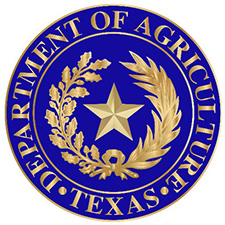Senate approves additional $20 billion for voluntary conservation practices
The climate, tax and healthcare bill passed by Democratic senators on Sunday included $20 billion to ramp up USDA’s voluntary land stewardship programs, a potential windfall for climate mitigation ahead of the 2023 farm bill. “We are equipping farmers, foresters and rural communities with the necessary tools to be part of the solution,” said Senate Agriculture chairwoman Debbie Stabenow.
Scott bill would help small livestock producers
The United States loses an average of 17,000 beef producers each year, said House Agriculture chairman David Scott in filing legislation that would increase USDA support of small producers and help them find local and regional markets for their beef. “We believe we are on the right track,” Scott told reporters last week.
USDA proposes livestock welfare rules for organic farms
More than four years after the Trump administration nixed the idea, the Biden administration proposed a broad-ranging set of animal welfare rules for organic farms. Producers already are required to provide their animals with year-round access to the outdoors and enough room to stretch their limbs. Agriculture Undersecretary Jenny Moffit said on Friday the proposed regulation would “establish and clarify clear standards for organic livestock and poultry production.”
TODAY’S QUICK HITS
Cropland values up 14.3 percent: Based on a survey of landowners, U.S. cropland was worth an average $5,050 an acre this year, up $630 an acre from 2021, with the largest increases in the Midwest and Plains. Values surged 24.5 percent in Kansas, 21.5 in Nebraska and 19.7 percent in Iowa. (USDA)
Food index falls sharply: The Food Price Index dropped 8.6 percent in July, its fourth monthly decline in a row after climbing to a record high in March following Russia’s invasion of Ukraine, with vegetable oil prices plummeting to a 10-month low and grain prices declining 11.5 percent. (Food and Agriculture Organization)
Newhouse tops Trump acolyte: Rep. Dan Newhouse, a member of the House Appropriations subcommittee that oversees USDA and FDA spending, led all candidates, including a fellow Republican endorsed by Donald Trump, in a “jungle” primary in Washington State. He will face Democrat Doug White, a farmer, in the general election. (Tri-City Herald)
Salmonella is an adulterant: As part of USDA’s efforts to reduce salmonella bacteria in poultry, the Food Safety and Inspection Service said it would declare salmonella to be an adulterant in breaded and stuffed raw chicken products. (USDA)
More soybeans in 2023: One out of every five crop producers plans to adjust their mix of crops in 2023 due to rising input costs; 46 percent of those farmers say they will plant more soybeans, 26 percent plan to sow more wheat and 21 percent say more corn. (Ag Economy Barometer)
ON THE CALENDAR
Monday
USDA releases weekly Crop Progress report, 4 p.m. ET.
Tuesday
Minnesota holds a special election in the 1st House District, to complete the term of the late Jim Hagedorn, a member of the House Agriculture Committee, who died Feb. 17. Republicans nominated Brad Finstad, a former USDA official, and Democrats nominated Jeffrey Ettinger, former Hormel chief executive, in the southern Minnesota district. Minnesota, Connecticut, Vermont and Minnesota hold primary elections for terms beginning in 2022.
Wednesday
The Labor Department releases the monthly Consumer Price Index report, 8:30 a.m. ET. At latest count, the U.S. inflation rate was 9.1 percent, with food prices up 10.4 percent in the 12 months ending in June.
The American Coalition for Ethanol holds annual conference, through Friday, Omaha. EPA agricultural adviser Rod Snyder was scheduled as keynote speaker.
Thursday
Opening day of Iowa State Fair, Illinois State Fair and Missouri State Fair, all through Aug. 21.
Soil Health Institute holds annual meeting online, with the theme “Scaling up Health,” through Friday.
Friday
USDA releases monthly Crop Production and WASDE reports, noon ET. Often regarded as the most important of the year, the August crop report makes the first survey-based forecasts of the fall harvest for corn, soybeans, cotton and other major crops. The USDA has projected a record-setting soybean crop of 4.505 billion bushels and a corn crop of 14.505 billion bushels, the fourth-largest corn crop on record. The crop report will include revisions, if needed, to spring plantings because of heavy rainfall that delayed fieldwork in Minnesota, North Dakota and South Dakota. Some 18 percent of soybeans and 4.4 percent of corn were yet to be planted in early June, when USDA conducted its annual Acreage survey. The government said it would collect updated information during July about plantings.











